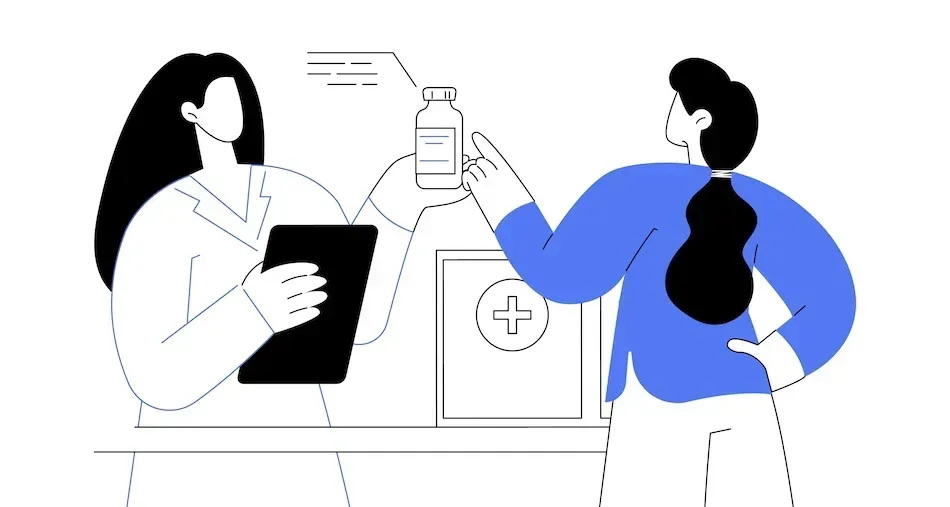Can Low- to Intermediate-Risk CLL Patients Stop Specialized Follow-Up?

Is it necessary for all CLL patients to continue long-term follow-up visits with specialists? Learn insights gained from a Danish study about this topic below.
Why Stop Specialized Follow-Up for CLL?
In Denmark, a significant study has shed light on whether all patients with chronic lymphocytic leukemia (CLL) need continuous specialized follow-up care. CLL is a type of cancer that often progresses slowly, and about half of CLL patients will never require treatment. Despite this, the standard recommendation is life-long specialized follow-up for all patients.
However, given the need to optimize healthcare resources, a policy was recommended for some hospitals in Denmark to end specialized follow-ups with a hematologist for patients with low- to intermediate-risk CLL who showed no cancer-related symptoms. Patients continued to attend their regular check-ups. Danish researchers conducted a study to evaluate if this was safe.
How is CLL Risk Level Determined?
Before we examine the study results, let's explain how the researchers identified low- and intermediate-risk CLL types.
For this study, researchers developed the CLL-WONT (Chronic Lymphocytic Leukemia Without Need of Treatment) index to assess whether patients needed treatment. This scoring system evaluates seven risk factors, each assigned a point value:
-
Age over 65 (1 point)
-
Elevated lactate dehydrogenase (LDH) (1 point)
-
High beta-2-microglobulin (1 point)
-
Unmutated IGHV gene (1 point)
-
Genetic deletions del(11q) or del(17p) (1 point)
-
Absolute lymphocyte count (ALC) between 15 × 10⁹/L and 30 × 10⁹/L (1 point), and ALC over 30 × 10⁹/L (2 points)
-
Being in Binet stage B or C (2 points)
Based on their total score, patients are categorized into one of four risk groups: low risk (0-1 points), intermediate risk (2-3 points), high risk (4-5 points), or very high risk (6-10 points).
The study also used the CLL-IPI (International Prognostic Index), another scoring system that categorizes CLL patients based on five factors: age, clinical stage, TP53 mutation, IGHV status, and beta-2-microglobulin levels. Points are assigned to these factors, grouping patients into risk categories from low to very high. This system helps forecast the disease’s progression and tailor treatment plans.
Is Stopping Specialized Follow-Up for Low- to Intermediate-Risk CLL Safe?
In the Danish study, 112 patients with low- to intermediate-risk CLL stopped their specialized follow-ups, while 88 continued. This setup allowed researchers to observe and compare the outcomes between the two groups over several years. They looked at overall survival rates, frequency of hospital visits, and the occurrence and treatment of infections.
The findings were telling. At the check-in point of three years, the overall survival rates were similar between the two groups, with 87% for patients who stopped follow-up and 80% for those who continued.
Interestingly, those who ended specialized follow-up had significantly fewer hospital visits, averaging 0.7 visits per year compared to 4.3 for those who continued. Also, the patients who stopped specialized follow-ups got their first infection later than those who kept going to specialist visits.
Another finding from the study was that patients who stopped specialist follow-ups spent a shorter time in the hospital while recovering from an infection, an average of 4 days compared to 12 days for those who continued specialist visits.
This shows that stopping specialized follow-up for low- to intermediate-risk CLL patients who don’t show cancer-related symptoms can be safe and might even lead to better outcomes in terms of fewer hospital visits and shorter stays for recovering from infections. This may lower healthcare costs and reduce your exposure to hospital-associated risks, potentially enhancing your overall quality of life.
Conclusion
In summary, recent research has shown that many patients with low- to intermediate-risk CLL may not need ongoing specialized medical follow-ups. This conclusion is based on a study where patients discontinuing such follow-ups experienced similar survival rates to those who continued but experienced fewer hospital visits and infections. The findings suggest that a less intensive follow-up approach could be safe and effective, potentially easing the burden on healthcare resources and improving your quality of life.
Stay updated with the latest news on research and treatment of CLL with HealthTree. Subscribe to our newsletter today!
Sources:
Is it necessary for all CLL patients to continue long-term follow-up visits with specialists? Learn insights gained from a Danish study about this topic below.
Why Stop Specialized Follow-Up for CLL?
In Denmark, a significant study has shed light on whether all patients with chronic lymphocytic leukemia (CLL) need continuous specialized follow-up care. CLL is a type of cancer that often progresses slowly, and about half of CLL patients will never require treatment. Despite this, the standard recommendation is life-long specialized follow-up for all patients.
However, given the need to optimize healthcare resources, a policy was recommended for some hospitals in Denmark to end specialized follow-ups with a hematologist for patients with low- to intermediate-risk CLL who showed no cancer-related symptoms. Patients continued to attend their regular check-ups. Danish researchers conducted a study to evaluate if this was safe.
How is CLL Risk Level Determined?
Before we examine the study results, let's explain how the researchers identified low- and intermediate-risk CLL types.
For this study, researchers developed the CLL-WONT (Chronic Lymphocytic Leukemia Without Need of Treatment) index to assess whether patients needed treatment. This scoring system evaluates seven risk factors, each assigned a point value:
-
Age over 65 (1 point)
-
Elevated lactate dehydrogenase (LDH) (1 point)
-
High beta-2-microglobulin (1 point)
-
Unmutated IGHV gene (1 point)
-
Genetic deletions del(11q) or del(17p) (1 point)
-
Absolute lymphocyte count (ALC) between 15 × 10⁹/L and 30 × 10⁹/L (1 point), and ALC over 30 × 10⁹/L (2 points)
-
Being in Binet stage B or C (2 points)
Based on their total score, patients are categorized into one of four risk groups: low risk (0-1 points), intermediate risk (2-3 points), high risk (4-5 points), or very high risk (6-10 points).
The study also used the CLL-IPI (International Prognostic Index), another scoring system that categorizes CLL patients based on five factors: age, clinical stage, TP53 mutation, IGHV status, and beta-2-microglobulin levels. Points are assigned to these factors, grouping patients into risk categories from low to very high. This system helps forecast the disease’s progression and tailor treatment plans.
Is Stopping Specialized Follow-Up for Low- to Intermediate-Risk CLL Safe?
In the Danish study, 112 patients with low- to intermediate-risk CLL stopped their specialized follow-ups, while 88 continued. This setup allowed researchers to observe and compare the outcomes between the two groups over several years. They looked at overall survival rates, frequency of hospital visits, and the occurrence and treatment of infections.
The findings were telling. At the check-in point of three years, the overall survival rates were similar between the two groups, with 87% for patients who stopped follow-up and 80% for those who continued.
Interestingly, those who ended specialized follow-up had significantly fewer hospital visits, averaging 0.7 visits per year compared to 4.3 for those who continued. Also, the patients who stopped specialized follow-ups got their first infection later than those who kept going to specialist visits.
Another finding from the study was that patients who stopped specialist follow-ups spent a shorter time in the hospital while recovering from an infection, an average of 4 days compared to 12 days for those who continued specialist visits.
This shows that stopping specialized follow-up for low- to intermediate-risk CLL patients who don’t show cancer-related symptoms can be safe and might even lead to better outcomes in terms of fewer hospital visits and shorter stays for recovering from infections. This may lower healthcare costs and reduce your exposure to hospital-associated risks, potentially enhancing your overall quality of life.
Conclusion
In summary, recent research has shown that many patients with low- to intermediate-risk CLL may not need ongoing specialized medical follow-ups. This conclusion is based on a study where patients discontinuing such follow-ups experienced similar survival rates to those who continued but experienced fewer hospital visits and infections. The findings suggest that a less intensive follow-up approach could be safe and effective, potentially easing the burden on healthcare resources and improving your quality of life.
Stay updated with the latest news on research and treatment of CLL with HealthTree. Subscribe to our newsletter today!
Sources:

about the author
Megan Heaps
Megan joined HealthTree in 2022. She enjoys helping patients and their care partners understand the various aspects of the cancer. This understanding enables them to better advocate for themselves and improve their treatment outcomes.
Trending Articles

Get the Latest Chronic Lymphocytic Leukemia Updates, Delivered to You.
By subscribing to the HealthTree newsletter, you'll receive the latest research, treatment updates, and expert insights to help you navigate your health.
Together we care.
Together we cure.
3x Faster.




